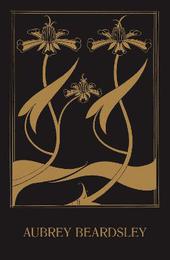
|
Aubrey Beardsley
Paperback / softback
Main Details
| Title |
Aubrey Beardsley
|
| Authors and Contributors |
Edited by Stephen Calloway
|
|
Edited by Caroline Corbeau-Parsons
|
| Physical Properties |
| Format:Paperback / softback | | Pages:192 | | Dimensions(mm): Height 298,Width 196 |
|
| Category/Genre | Individual artists and art monographs |
|---|
| ISBN/Barcode |
9781849766807
|
| Classifications | Dewey:741.6092 |
|---|
| Audience | |
|---|
| Illustrations |
200 colour illustrations
|
|
Publishing Details |
| Publisher |
Tate Publishing
|
| Imprint |
Tate Publishing
|
| Publication Date |
4 March 2020 |
| Publication Country |
United Kingdom
|
Description
Aubrey Beardsley (1872-1898) is best remembered for his powerful illustrations for Salome by Oscar Wilde. Spanning seven years, his intense, prolific career as a draughtsman and illustrator was cut short when he died of tuberculosis aged twenty-five. Beardsley's subversive, sinuous black-and-white drawings and his own complex persona became synonymous with decadence: he alighted on the perverse and erotic aspects of life and legend, shocking audiences with his bizarre sense of humour and fascination with the grotesque. His keen observation of his contemporaries make him of his time, but his distinct style resonated with subsequent generations, not least because the line-block print process popularised his work and enabled it to be widely circulated. A major influence on the development of Art Nouveau and Diaghilev in particular, Beardsley was the subject of a large monographic exhibition at the V&A in 1966, which triggered a revival and proved seminal for psychedelic pop culture and design. Beardsley's drawings remain a key reference in body art today and retain great popular appeal. A range of short essays on the key aspects of Beardsley's short but remarkably influential career compliment images of his fascinating work in a sumptuously produced book.
Author Biography
Stephen Calloway: independent art historian, curator, and Beardsley scholar Caroline Corbeau-Parsons: Curator, British Art 1850-1915, Tate Britain
|